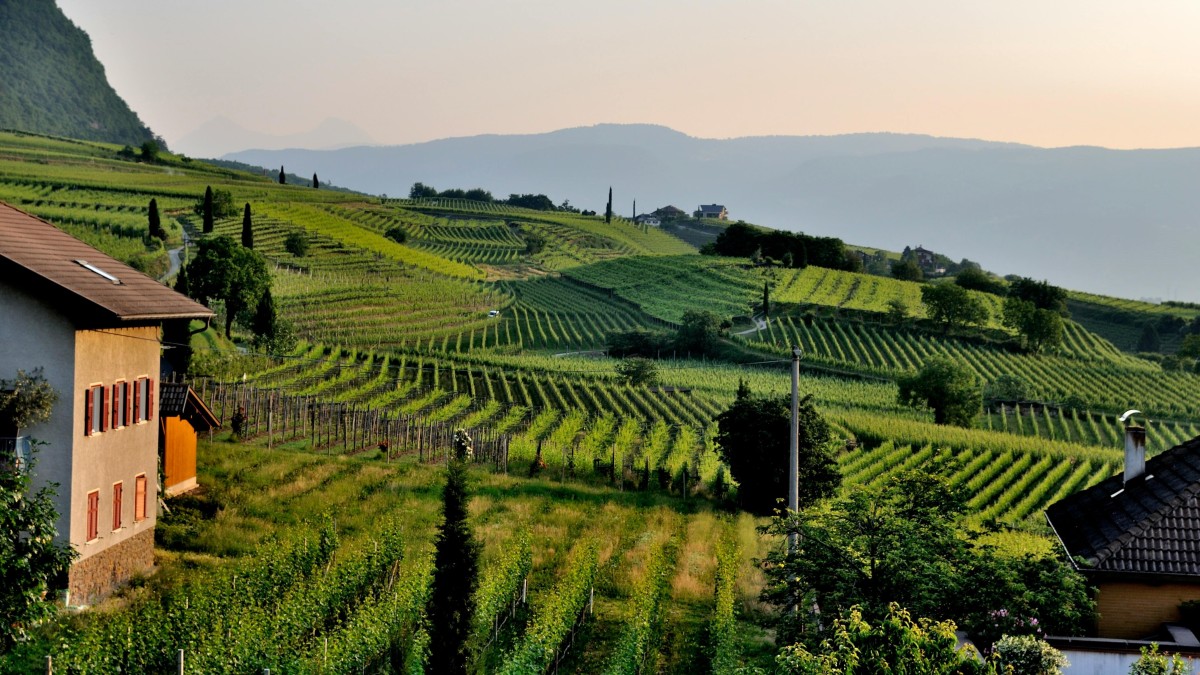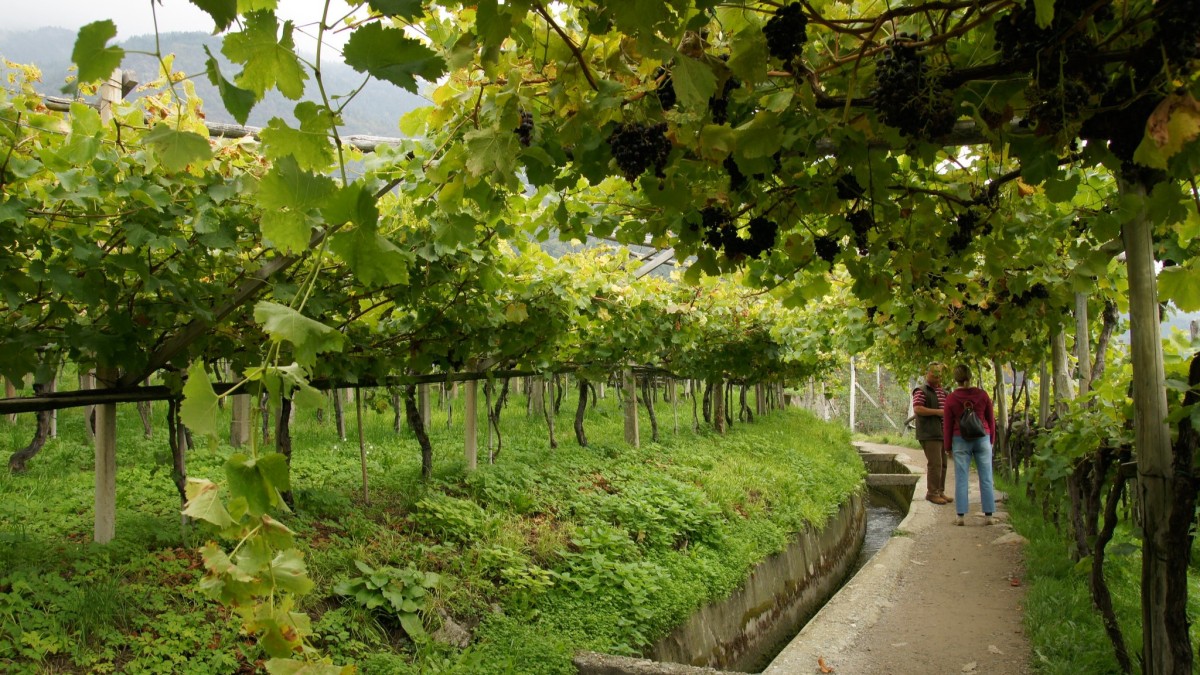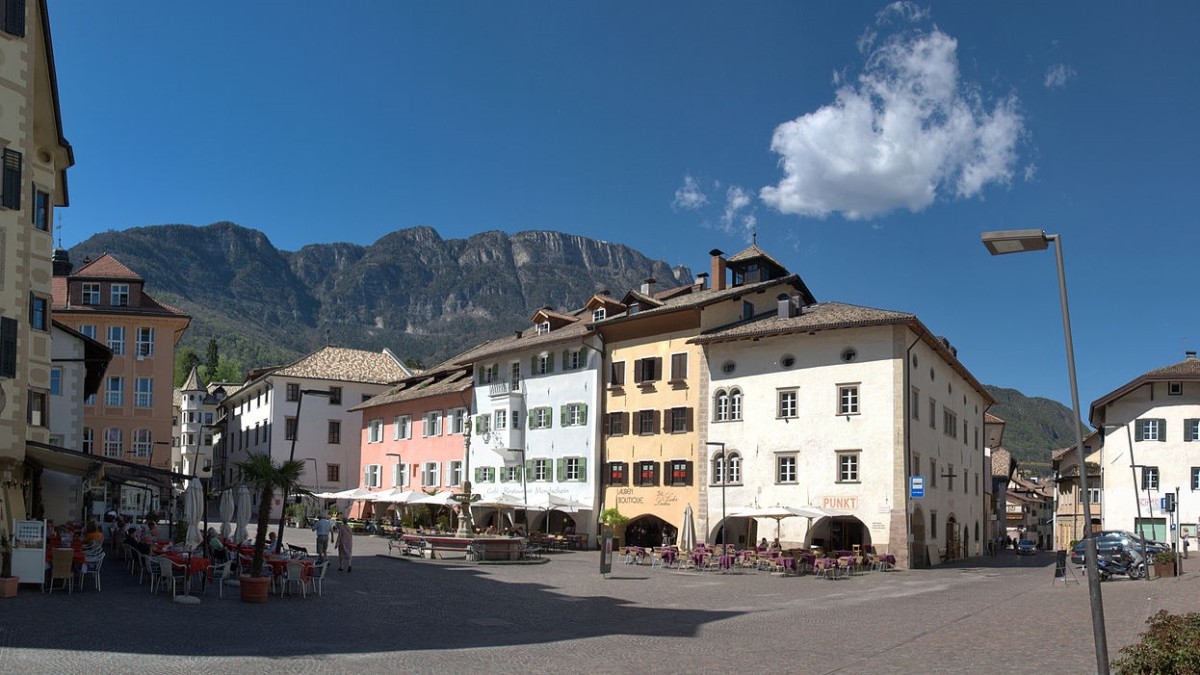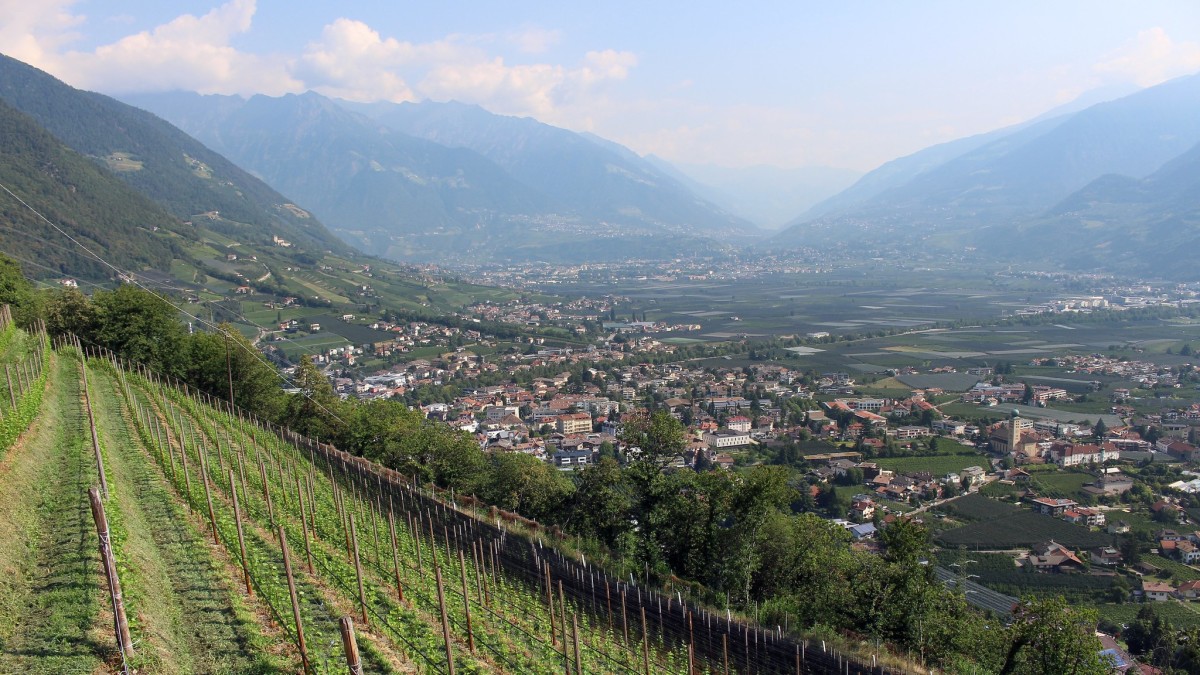
Alto Adige is one of Italy’s most fascinating wine-producing regions. It is no coincidence that it is home to one of the oldest routes entirely dedicated to wine. The Alto Adige Wine Road passes through around 16 municipalities, including the provincial capital, Bolzano. The region boasts approximately 4,250 hectares of vineyards, which account for most of its wine production. Here’s a guide to the towns along the route and what to see.
Where is the Alto Adige Wine Road and how long is it?
This scenic route runs at the foot of the Dolomites, following the course of the River Adige. The entire Wine Road stretches around 150 kilometres, making it one of Italy’s longest and most varied wine routes. The journey begins in Nalles, north of Bolzano, and winds southwards to Salorno, close to the border with the province of Trento. Along the way, the road connects 16 wine-producing municipalities, including Appiano, Caldaro, Termeno, and Cortaccia, each with its own unique wine traditions.
If travelling by car, you can take the A22 Brennero motorway and exit at Bolzano Sud or Egna-Ora-Termeno, depending on your direction of travel. Those using public transport can reach Bolzano or Egna by train and continue with local buses.

Which towns are on the Wine Road?
Along the Wine Road, you’ll find numerous towns known for their hospitality, historic wineries, and wine-related events, including:
- Nalles: a small village at the gateway to the Wine Road, famous for white wines and orchards.
- Andriano: a peaceful village surrounded by vineyards, known for authentic wineries and quality production.
- Terlano: renowned for its excellent Sauvignon and other well-known white varieties.
- Appiano on the Wine Road: the largest wine municipality in the region, rich in castles and a wide variety of wines.
- Caldaro on the Wine Road: famous for the lake and Schiava wine, with a lively atmosphere and numerous wine bars.
- Termeno on the Wine Road: home of Gewürztraminer and custodian of ancient wine and food traditions.
- Cortaccia on the Wine Road: a hilly area ideal for native varieties and family-run wineries.
- Magrè on the Wine Road: a small historic village, known for quality red wines and historic homes.
- Cortina on the Wine Road: the smallest municipality along the Wine Road.
- Salorno on the Wine Road: the southernmost municipality on the route.
- Egna: a vibrant town with medieval arcades, famous for events and tastings.
- Montagna: features terraced landscapes and Pinot Noir production.
- Ora: a small town surrounded by vineyards and apple orchards, welcoming and full of local specialties.
- Vadena: an ancient village set in greenery, with local farms and wineries.
- Branzoll: near the valley edges, an ideal starting point for exploring lesser-known vineyards and wineries.

Things to see along the Wine Road
Beyond the many wineries where you can stop to taste excellent local wines, the towns along the Wine Road offer plenty of tourist attractions, drawing visitors throughout the year.
Firstly, the numerous castles and noble residences testify to the region’s long history. Among the most notable are Castel d’Appiano, famous for its Romanesque frescoes and spectacular vineyard views, and Castel Sallegg in Caldaro, now home to a renowned winery. Castel Turmhof in Cortaccia and Castel Rametz near Merano are also worth a visit.
For nature lovers, Lake Caldaro—the warmest in the Alps—is a must-see: here you can enjoy water sports or simply relax. The small lakes of Monticolo are also worth a visit. The local villages are equally charming: in Egna, you can stroll under the arcades, while Termeno boasts colourful Tyrolean-style houses.
Finally, for those wishing to deepen their knowledge of local wine culture, the Provincial Wine Museum in Caldaro offers a fascinating journey through ancient tools, historical documents, and guided tastings. Throughout the year, numerous events take place, including the Night of the Wineries, Wine Weeks, and harvest festivals.

Cycling itinerary: which route to take
The Alto Adige Wine Road can also be explored by bicycle, offering a different way to experience the route with its vineyards and stunning Dolomite views. There are many opportunities to stop at historic estates and wineries to sample local wines such as Schiava, Lagrein, Gewürztraminer, and a selection of whites and reds including Sauvignon, Pinot Bianco, Pinot Nero, Merlot, and Cabernet.
The routes, mostly easy and accessible in all seasons, follow the River Adige and can be tackled separately or combined according to your preference.
Two of the three cycling routes focus on areas dedicated to specific grape varieties: the “Central” route passes by Lake Caldaro, famous for Schiava wine, while the “Southern” route winds through the countryside where Gewürztraminer is produced, closely associated with Termeno.

Living in Alto Adige
Alto Adige is one of Italy’s most sought-after regions for those seeking a healthy and stimulating environment. One of the most appreciated aspects is the quality of life: clean air, green landscapes, and proximity to mountains, lakes, and forests allow outdoor sports all year round. In addition, the services are modern and efficient, with high-level bilingual schools, advanced healthcare, and a public transport network connecting all major towns.
In terms of work, living in Alto Adige offers opportunities in agriculture, tourism, local crafts, and the growing innovative sectors. Explore the latest property listings on idealista:

